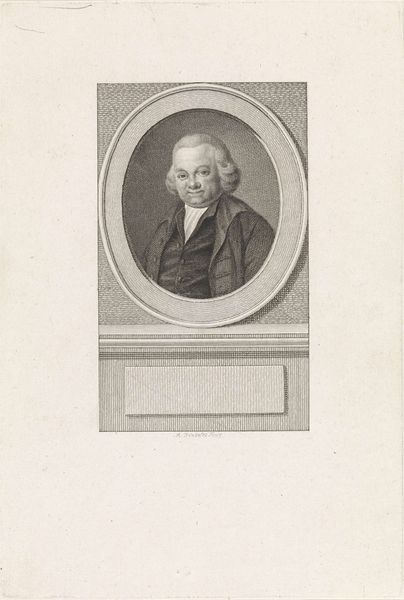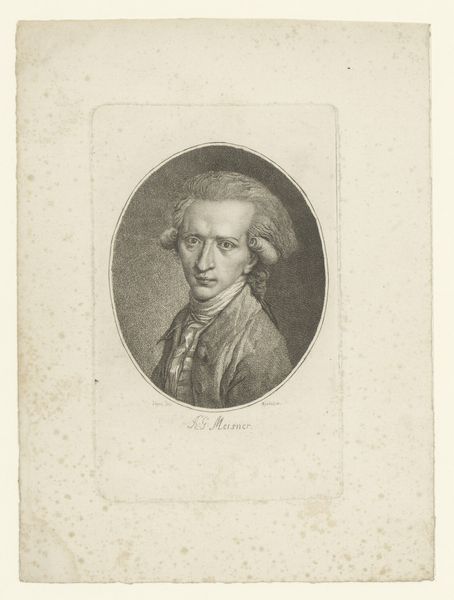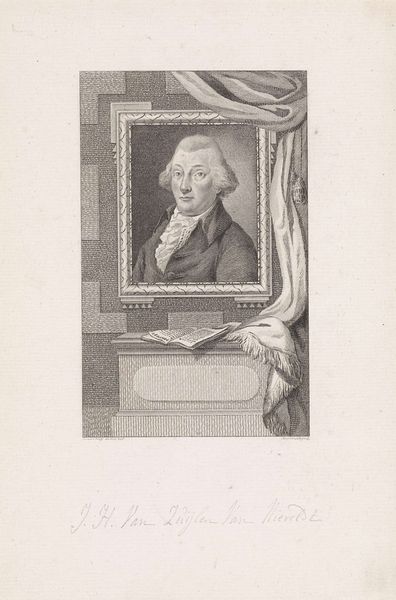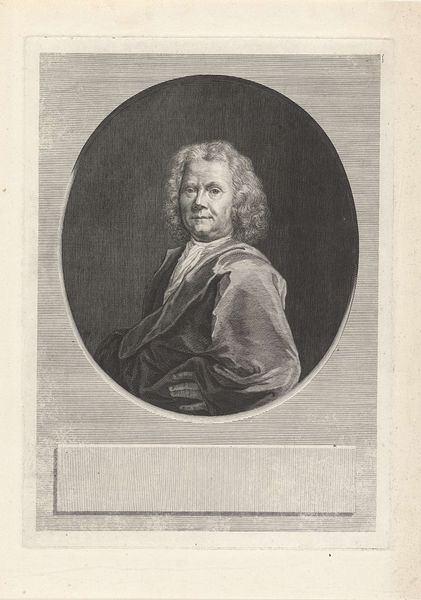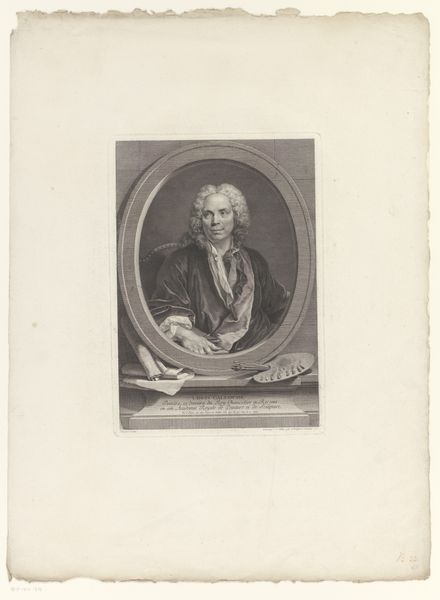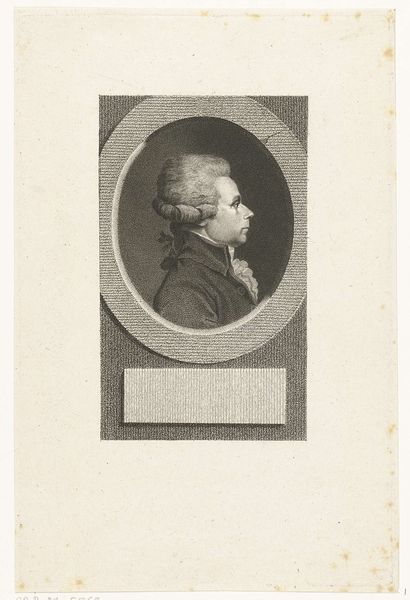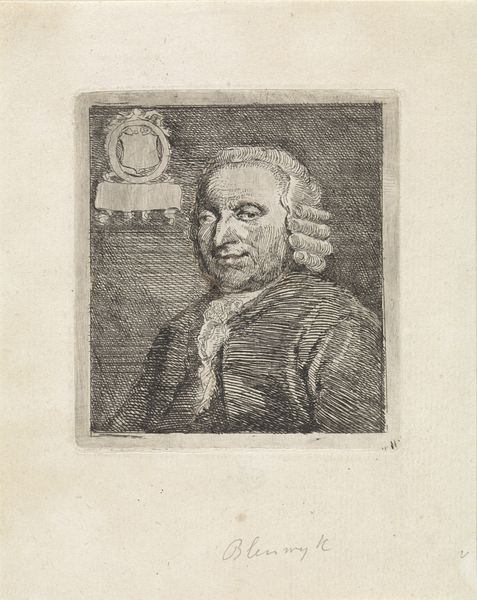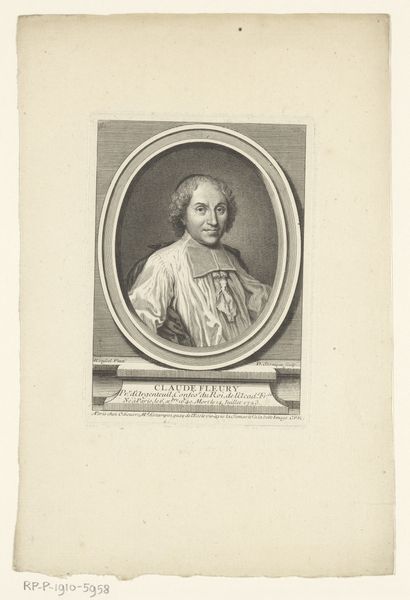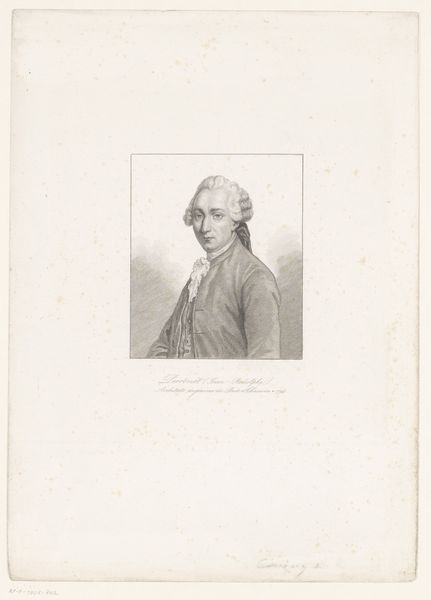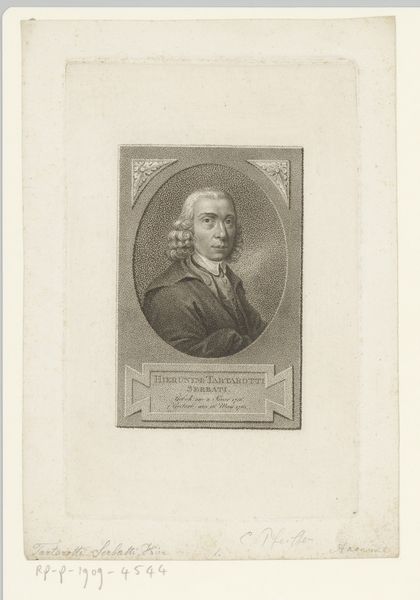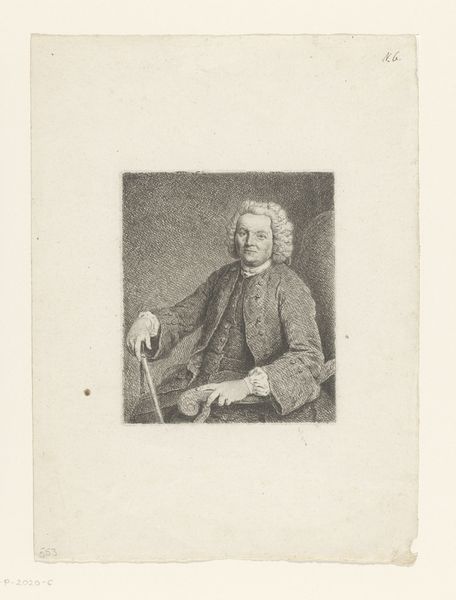
Dimensions: height 285 mm, width 220 mm
Copyright: Rijks Museum: Open Domain
Editor: We're looking at "Kleine vogelvanger," or "Small Bird Catcher," an engraving from the late 18th century by Pieter Willem van Megen, held at the Rijksmuseum. There's such a tenderness in this image; a young boy holding a bird looks directly out at us, framed by a window. How would you interpret this work? Curator: It’s interesting to consider this work within the social context of the late 1700s. Images of children, like this one, became increasingly popular. The rise of genre paintings depicting scenes from everyday life spoke to a growing middle class and their interest in sentimental subjects. Have you considered how the depiction of childhood changed during this period? Editor: I hadn't thought of that exactly, but it does make me wonder if this engraving speaks to changing societal views on children and their roles. Were children becoming symbols of innocence, perhaps? Curator: Precisely! The boy’s delicate features, the tender way he holds the bird, and even the framed window itself – it all contributes to this sense of idyllic innocence. These framed scenes, so popular in Dutch art, offered a controlled, 'civilized' view of the world. Did you notice that the boy's clothing and hair reflect upper-class fashion? Editor: Yes, I see it now! The fine clothes suggest a particular social standing, almost as if his 'innocence' is a privilege afforded to him. It complicates my initial reaction. Curator: The politics of imagery are always at play. The engraving could function both as a portrait and as a subtle display of status within Dutch society. These genre paintings often subtly reinforced social hierarchies. Editor: This has really opened my eyes. It's much more than just a sweet depiction of a boy and a bird! Curator: Absolutely. Considering the social and historical background adds so much depth, wouldn’t you agree?
Comments
No comments
Be the first to comment and join the conversation on the ultimate creative platform.
